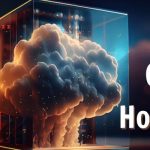Fujifilm X100V Review – The X100V is Fujifilm’s fifth X100-series camera since the original model debuted almost a full decade ago. Through each successive iteration, Fujifilm has made its large-sensor, prime-lens compact camera more and more capable, and this latest model (officially pronounced Ex One Hundred Vee) takes the core bits of Fujifilm’s high-end interchangeable-lens X-Pro3 and slips them into a much smaller package. This means you get the company’s latest 26MP X-Trans APS-C sensor and processor combo, the promise of much-improved autofocus and the best video feature set we’ve seen on a prime-lens compact camera. But it doesn’t stop there: the lens has been redesigned, the ergonomics refined, the viewfinder revisited, and a whole lot more.
Contents
Fujifilm X100V Review
Key specifications
- 26MP X-Trans sensor
- Redesigned lens (still a 23mm F2 pancake, compatible with previous converters)
- Built-in 4-stop ND filter
- Tilting 1.62M-dot touchscreen LCD panel
- Updated 3.69M-dot OLED EVF, redesigned OVF optics
- Up to 4K/30p with Eterna film sim and F-Log internal capture (8-bit only)
- 2.5mm mic port, headphones through USB-C with adapter
- Weather-sealed, when filter adapter and filter are used
- Single SD card slot
- CIPA rated to 350 shots using the EVF, 420 using the OVF
Fujifilm X100V release date and price
- The Fujifilm X100V costs $1,399 / £1,299 / AU$2,249
- It’s available in Silver and Black versions
- Some retailers are offering it with an optional ‘Weather Resistance’ kit
The Fujifilm X100V is available in two versions, Silver and Black. Both cost $1399 / £1299 / AU$2,349, which is around the same price that the X100F originally went on sale for in 2017, if it’s adjusted for inflation.
Some retailers are offering the X100V with a ‘Weather Resistance’ kit, which includes an AR-X100 adapter ring and PRF-49 protection filter. The X100V’s body is weather-sealed, but these accessories make it completely resistant to inclement weather.
This ‘Weather Resistance’ kit costs £99 (about $130 / AU$190), although in the UK Fujifilm says the kit will initially be be sold at £49.50 (about $60 / AU$100) when you buy it with the camera.
Fujifilm X100V Review – Autofocus
The new sensor brings with it a new on-sensor phase detection autofocus system (also borrowed from the X-Pro3), which has 425 AF points that are spread across almost the entire frame (up from 325 points on the X100F). Tracking autofocus is responsive, performing similarly to Fujifilm’s interchangeable-lens flagships. Face and eye detection should also be improved, and we’ve taken a closer look at that later in the review.
The X100V also gets the X-Pro3’s customizable focus range limiter, which could also be handy for street shooters in particular.
At first glance, the 23mm F2 lens on the X100V looks identical to its predecessors’. It has, in fact, been completely redesigned to offer better performance when using wide-apertures close-up (a weakness of the older models), as well as generally better corner performance. We haven’t been able to test the new lens fully, but in our initial shooting, it looks like these claims have merit.
Fans of Fujifilm’s WCL-X100 and TCL-X100 wide-angle and telephoto conversion lenses will appreciate that the new lens design on the X100V will still work with these adapters, so you won’t have to buy new ones. On the other hand, you could argue that this compatibility may have tied the lens designers’ hands in that they couldn’t diverge very far at all from the physical constraints of the original design.
For those that were hoping a lens design might bring a faster autofocus motor, unfortunately, our initial testing doesn’t show a dramatic improvement: we’ll take a closer look when we get a final production camera. But to end on a positive note, there continues to be a built-in ND filter, making it easy to shoot under bright light at wider apertures.
Performance
The X100V’s two biggest shooting improvements over its X100F predecessor are its redesigned 23mm f/2 lens and snappier autofocus, which comes courtesy of the new X-Processor 4.
The lens has an identical focal length and aperture to the X100F, but Fujifilm says the one on this camera has two aspherical elements (rather than one). In theory, this helps improve resolution and reduce distortion.
What about in practice? While we didn’t have an X100F to compare it to, the X100V certainly offers great sharpness in the centre of its images, even when you shoot wide open. One of our main complaints with the X100F was that its photos tended to be a touch soft when shooting at f/2, particularly if you were close to your subject. This often meant stopping down to f/2.8 or f/4.
But the good news on the X100V is that shooting wide open feels much less like a compromise. The minimum focusing distance is still 10cm, but you can now feel more confident about leaving it set to f/2 to achieve some lovely shallow depth of field.
This flexibility is supported by the strong autofocus performance. We tested it side-by-side with a Fujifilm X-T3 fronted by a 23mm f/2 lens, and it’s certainly not quite up to the level of that combination – the X100V was noticeably slower and noisier, particularly in low light situations.
The difference wasn’t drastic, though, and the X100V rarely missed focus or resulted in missed shots. The Face/Eye detection is confident and reliable when shooting people, while in tracking autofocus mode it tenaciously follows objects if you flick it into continuous AF using the switch on the side.
For a pocketable camera with an f/2 lens, autofocus performance is overall very good. And while the X100V certainly isn’t a sports camera, there is decent burst performance to help you capture fleeting moments. Using an SDHC UHS-II card with 250MB/s write speeds we managed to get slightly under the claimed 11fps maximum burst rate (around 10fps), with the buffer filling up after around 40 JPEGs and 20 Raws.







